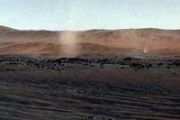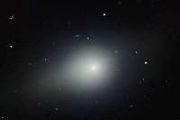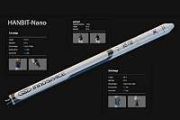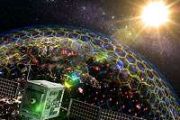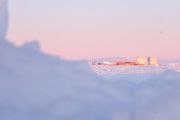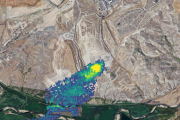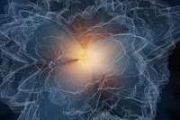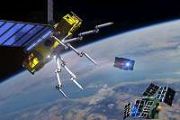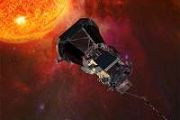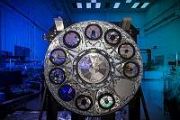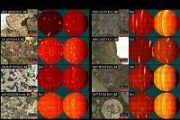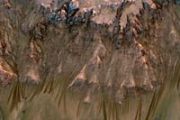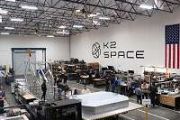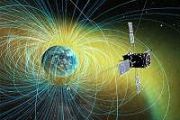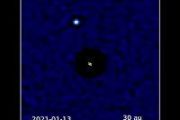
Copernical Team
Ariane 6 upper stage visits ESA’s temple of boom
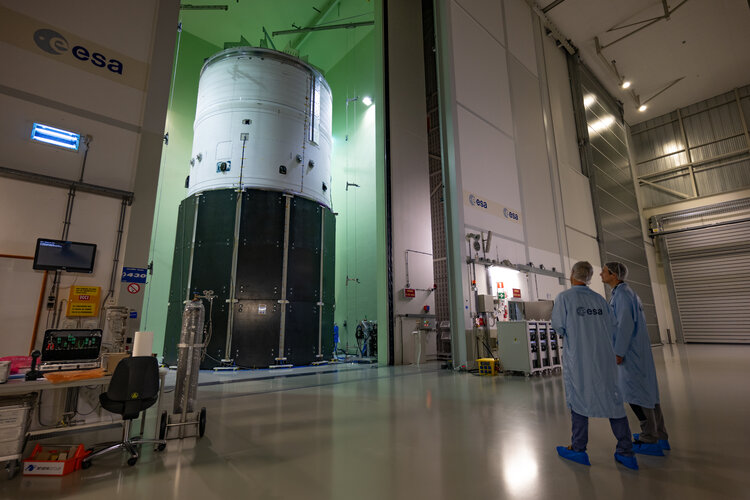
How we made history by landing on a comet
 Video:
00:09:09
Video:
00:09:09
On 12 November 2014, after a ten-year journey through the Solar System and over 500 million kilometres from home, Rosetta’s lander Philae made space exploration history by touching down on a comet for the first time. On the occasion of the tenth anniversary of this extraordinary feat, we celebrate by taking a look back over the mission's highlights.
Rosetta was an ESA mission with contributions from its Member States and NASA. It studied Comet 67P/Churyumov-Gerasimenko for over two years, including delivering lander Philae to the comet’s surface. Philae was provided by a consortium led by DLR, MPS, CNES
Scientists' advanced space materials reach the ISS for testing in extreme conditions
 A cutting-edge set of space materials developed by researchers at the University of Bristol has reached the International Space Station (ISS) for testing under the harsh conditions of low Earth orbit.
These high-performance materials, envisioned for use in future space structures, spacecraft, and potential space bases, will be tested on the Bartolomeo platform at the ISS. Over the course o
A cutting-edge set of space materials developed by researchers at the University of Bristol has reached the International Space Station (ISS) for testing under the harsh conditions of low Earth orbit.
These high-performance materials, envisioned for use in future space structures, spacecraft, and potential space bases, will be tested on the Bartolomeo platform at the ISS. Over the course o Intuition-1 marks one year of delivering advanced orbital insights
 On November 11, 2024, the Polish satellite Intuition-1 celebrated its first year in orbit, completing 5,490 revolutions around Earth and continuously delivering crucial data processed using its advanced AI-driven Leopard Data Processing Unit (DPU). This onboard system, developed by KP Labs, enhances resource analysis and processing efficiency through machine learning.
Intuition-1 is a hype
On November 11, 2024, the Polish satellite Intuition-1 celebrated its first year in orbit, completing 5,490 revolutions around Earth and continuously delivering crucial data processed using its advanced AI-driven Leopard Data Processing Unit (DPU). This onboard system, developed by KP Labs, enhances resource analysis and processing efficiency through machine learning.
Intuition-1 is a hype China achieves full real-time satellite data reception nationwide
 China now has real-time satellite data reception covering its entire national territory and 70 percent of Asia's land area, following the completion of a high-altitude ground station in Yulong Naxi autonomous county, Lijiang, operational since September.
"In other words, when a satellite passes over China, the data it collects is received by the ground station and transmitted in real-time
China now has real-time satellite data reception covering its entire national territory and 70 percent of Asia's land area, following the completion of a high-altitude ground station in Yulong Naxi autonomous county, Lijiang, operational since September.
"In other words, when a satellite passes over China, the data it collects is received by the ground station and transmitted in real-time Longest-serving satellite OSCAR-7 marks 50 years in orbit
 Launched on November 15, 1974, OSCAR-7, a microsatellite, continues its mission 50 years after its launch, serving as a vital asset for amateur radio operators globally. It holds the title of the oldest operational satellite, predating the launch of NASA's Voyager 1 and Voyager 2 by three years.
OSCAR-7 belongs to a series of amateur radio satellites known as OSCARs (Orbital Satellites Car
Launched on November 15, 1974, OSCAR-7, a microsatellite, continues its mission 50 years after its launch, serving as a vital asset for amateur radio operators globally. It holds the title of the oldest operational satellite, predating the launch of NASA's Voyager 1 and Voyager 2 by three years.
OSCAR-7 belongs to a series of amateur radio satellites known as OSCARs (Orbital Satellites Car Swirling polar vortices may exist on the Sun, research suggests
 Recent research led by the National Science Foundation's National Center for Atmospheric Research (NSF NCAR) indicates that the Sun, like Earth, may have swirling polar vortices. Unlike Earth's, these solar vortices are influenced by magnetic fields, impacting the solar cycle and space weather prediction.
The findings, detailed in the *Proceedings of the National Academy of Sciences (PNAS)
Recent research led by the National Science Foundation's National Center for Atmospheric Research (NSF NCAR) indicates that the Sun, like Earth, may have swirling polar vortices. Unlike Earth's, these solar vortices are influenced by magnetic fields, impacting the solar cycle and space weather prediction.
The findings, detailed in the *Proceedings of the National Academy of Sciences (PNAS) Model of Haoloong Space Cargo Shuttle to Be Unveiled at Airshow China
 A model of China's Haoloong space cargo shuttle is set to be showcased at the 15th China International Aviation and Aerospace Exhibition, known as Airshow China, according to an announcement from the Aviation Industry Corporation of China (AVIC) on Monday.
This new reusable space cargo vehicle, developed independently in China, aims to reduce the cost of transporting supplies to and from t
A model of China's Haoloong space cargo shuttle is set to be showcased at the 15th China International Aviation and Aerospace Exhibition, known as Airshow China, according to an announcement from the Aviation Industry Corporation of China (AVIC) on Monday.
This new reusable space cargo vehicle, developed independently in China, aims to reduce the cost of transporting supplies to and from t ispace, GISTDA, and mu Space Partner for Thai Lunar Exploration Initiative
 ispace, inc. (TOKYO: 9348), a leader in global lunar exploration, has entered a collaborative agreement with Thailand's national space agency, the Geo-Informatics and Space Technology Development Agency (GISTDA), and mu Space and Advanced Technology Co., Ltd, a Thai satellite and communications firm. This agreement is aimed at evaluating the feasibility of a lunar mission as part of Thailand's "
ispace, inc. (TOKYO: 9348), a leader in global lunar exploration, has entered a collaborative agreement with Thailand's national space agency, the Geo-Informatics and Space Technology Development Agency (GISTDA), and mu Space and Advanced Technology Co., Ltd, a Thai satellite and communications firm. This agreement is aimed at evaluating the feasibility of a lunar mission as part of Thailand's " SpaceX launches Koreasat-6A, highlights booster's 23rd successful mission
 SpaceX successfully launched South Korea's Koreasat-6A communications satellite on Monday afternoon from Kennedy Space Center in Florida. The launch commenced at approximately 12:20 p.m. EST.
This mission aimed to place the KT SAT Corp.'s satellite into orbit and was initially slated for 12:07 p.m. The Falcon 9's second stage ascended smoothly and deployed the KoreaSat-6A into orbit about
SpaceX successfully launched South Korea's Koreasat-6A communications satellite on Monday afternoon from Kennedy Space Center in Florida. The launch commenced at approximately 12:20 p.m. EST.
This mission aimed to place the KT SAT Corp.'s satellite into orbit and was initially slated for 12:07 p.m. The Falcon 9's second stage ascended smoothly and deployed the KoreaSat-6A into orbit about 



